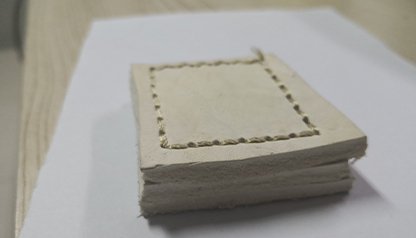6mm twin needle
Exploring the Versatility of the 6mm Twin Needle
The 6mm twin needle is a remarkable tool favored by both professional seamstresses and enthusiastic hobbyists alike. This specialized sewing needle allows for the creation of parallel lines of stitching, giving garments and fabrics a professional and polished finish. In this article, we will explore the various uses, benefits, and some tips for incorporating the 6mm twin needle into your sewing projects.
What is a Twin Needle?
A twin needle consists of two needle shafts that are aligned together and share a single shank. This design enables sewists to sew two lines of stitches simultaneously. Twin needles come in various widths and sizes, with the 6mm needle being one of the commonly used options. This particular width strikes a balance between creating an attractive stitch appearance while still providing structural integrity to the fabric.
Uses of the 6mm Twin Needle
One of the most popular applications for a 6mm twin needle is in topstitching. This technique is often used to enhance the aesthetic appeal of hems, cuffs, and other finished edges. The two rows of stitching provide a decorative touch, making garments stand out. For instance, when working with knits, the twin needle allows for stretch in the stitch, preventing the fabric from becoming distorted or misshapen.
Additionally, the 6mm twin needle is frequently employed in hemming techniques. Instead of the traditional single stitch, twin needles create a beautifully finished hem that appears professional and neat. Many sewists also use it for sewing decorative seams on quilts and creating pintucks, giving dimension and texture to flat fabrics.
Benefits of Using a 6mm Twin Needle
6mm twin needle

One of the primary advantages of utilizing a 6mm twin needle is its efficiency. By sewing two lines of stitching simultaneously, desiring a more intricate look becomes quicker and easier. This time-saving aspect is particularly valuable when working on large projects, such as curtains or quilts, where numerous seams need to be finished.
Moreover, the dual lines of stitching provide additional strength to seams, making garments more durable. The wider spacing allows a slight amount of give, which is especially beneficial for elastic fabrics, as mentioned earlier.
Tips for Using a 6mm Twin Needle
When working with a twin needle, it is crucial to ensure that your sewing machine is properly set up. Start by choosing the right thread; using two spools of the same weight ensures that the stitches will be uniform. It is also advisable to use a stabilizer, especially on knit fabrics, to keep them from stretching as you sew.
Always remember to select an appropriate stitch length and type. Most sewing machines allow for various stitch options, but a straight stitch is typically best for basic sewing with a twin needle.
Also, it’s wise to practice on scraps before committing to your final project to ensure that you understand how the twin needle interacts with your fabric.
Conclusion
The 6mm twin needle opens up a myriad of possibilities for creating professional-quality stitches and finishes. Its unique design, which allows for parallel stitching, provides both aesthetic and practical benefits. Whether you’re a seasoned professional or a passionate beginner, incorporating a twin needle into your sewing toolkit can elevate your projects and enhance your skills. So, give the 6mm twin needle a try and unleash your creativity!
-
Industrial Cylinder Arm Sewing Machine: Revolutionizing Heavy-Duty SewingNewsJul.28,2025
-
Cylinder Arm Sewing Machine: Perfect for Special Sewing ApplicationsNewsJul.28,2025
-
Cylinder Bed Sewing Machine: Essential for Sewing Complex MaterialsNewsJul.28,2025
-
Heavy Duty Sewing Machine: The Essential Tool for Industrial ApplicationsNewsJul.28,2025
-
Computerized Pattern Sewing Machine: Revolutionizing Precision StitchingNewsJul.28,2025
-
Heavy Duty Industrial Sewing Machine: Power Meets PrecisionNewsJul.28,2025
-
Leather Sewing Machine: The Industrial Standard for Tough MaterialsNewsJul.18,2025





























